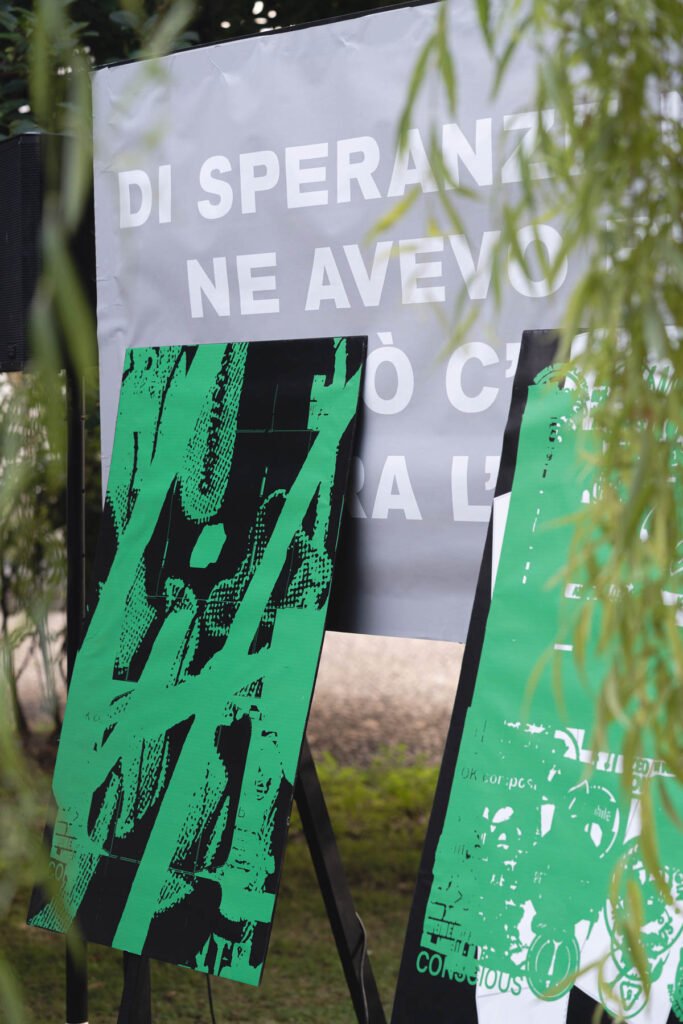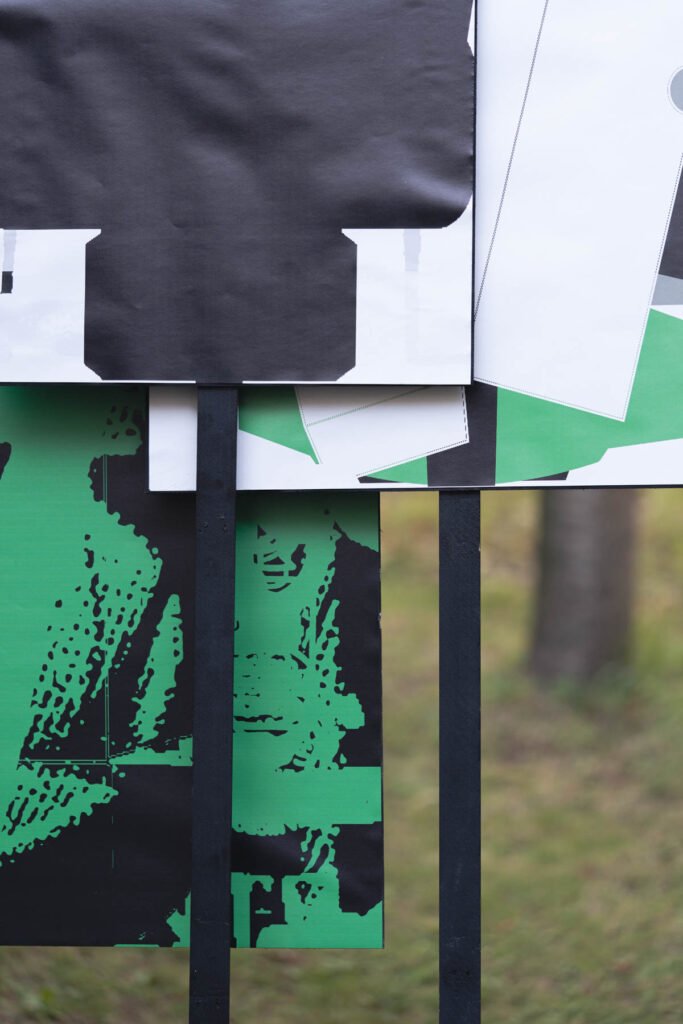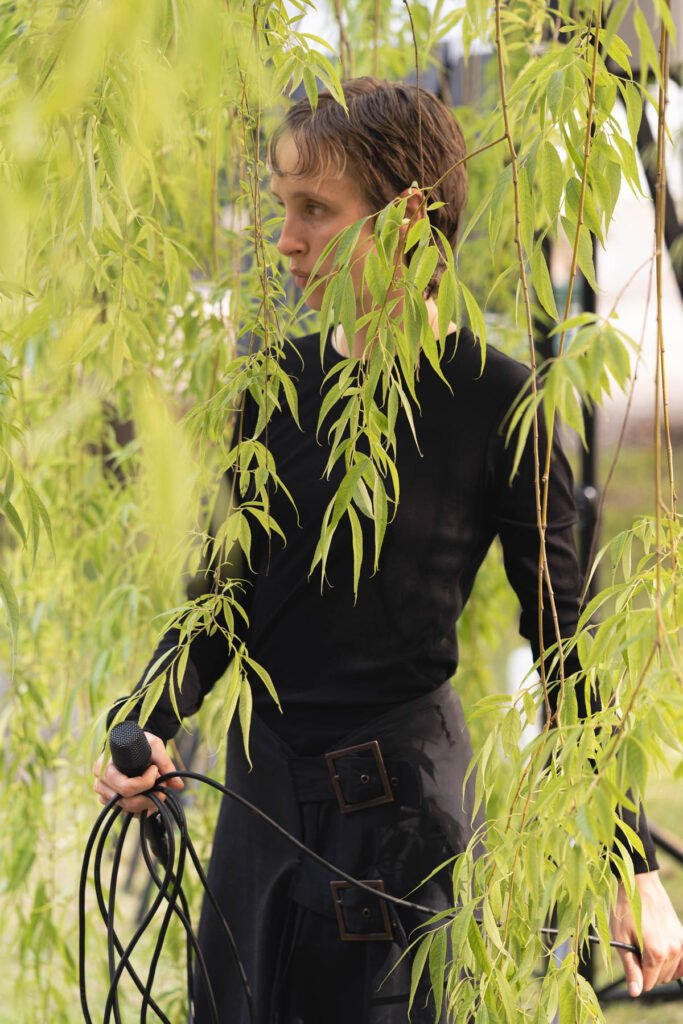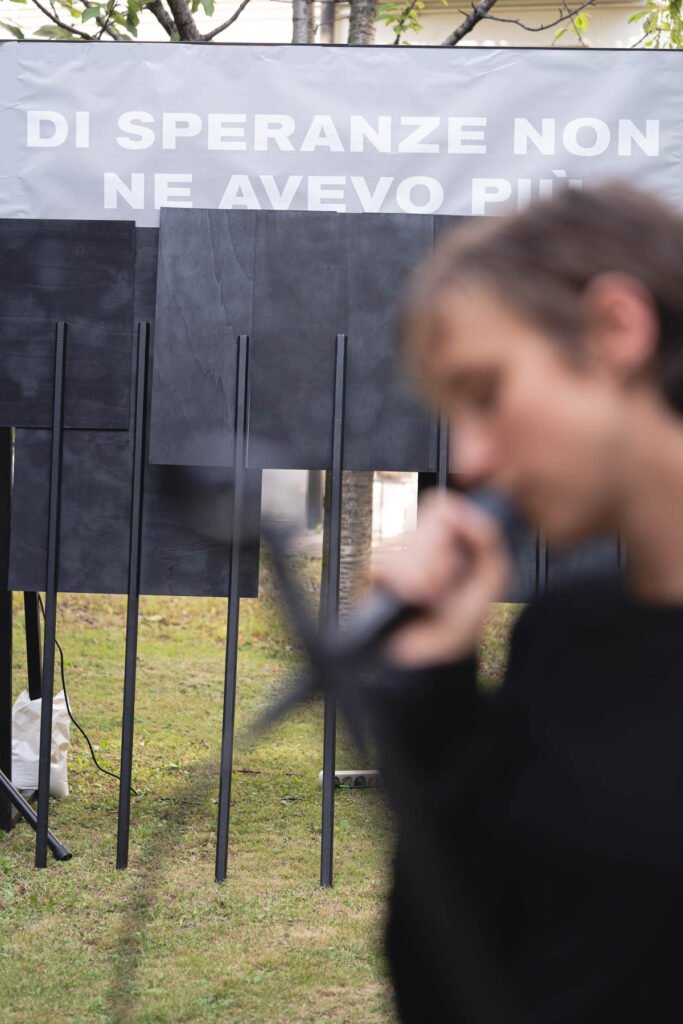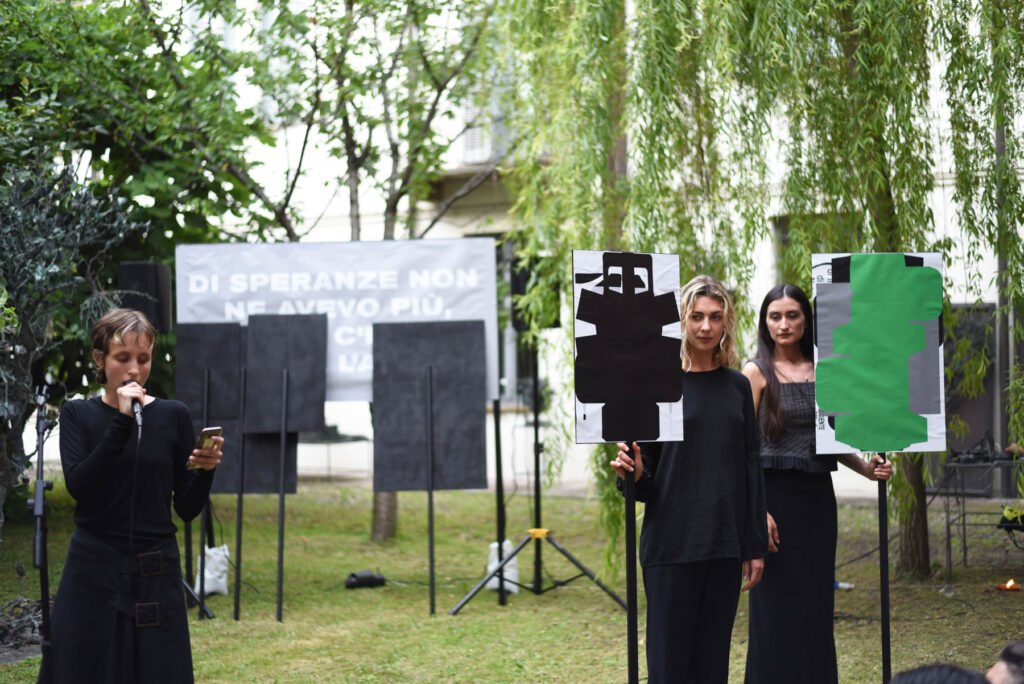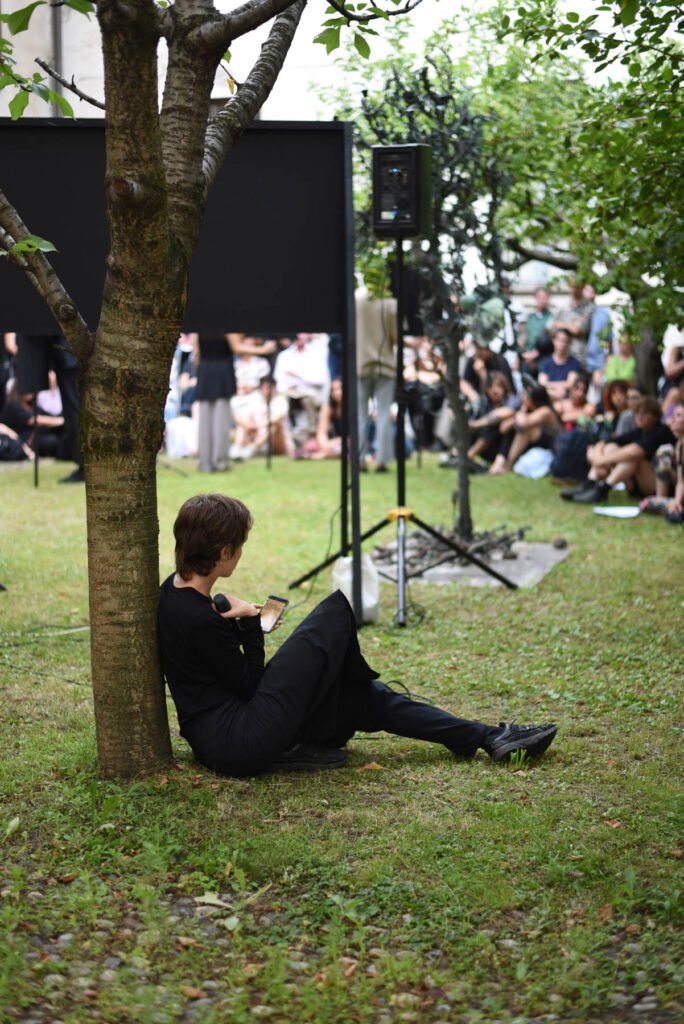FABRIZO VATIERI – OLIVIERO FIORENZI
H.A.R.I.
With the participation of Francesca Flora
Curated by Angela Vettese
Produced in collaboration with Provinciale 11 for the Intramezzi exhibition series
Scientific research by Carolina Merlo
Text by: Angela Vettese, Arnold Braho
Concept: Fabrizio Vatieri and Oliviero Fiorenzi
Performer: Francesca Flora
Drawings: Oliviero Fiorenzi
Music and texts: Fabrizio Vatieri
Fabrizio Vatieri (Naples, 1982) and Oliviero Fiorenzi (Osimo, 1992) are working together for the first time.
They come from different backgrounds: Vatieri is primarily a photographer, with studies in architecture and a multifaceted agency that includes performance and music, with incursions into the world of radio and eno-gastronomic culture; Fiorenzi has trained in art drawing on a lexicon made up of natural landscapes, play and collective actions; recently he has been using textiles and other light materials to build flying figures like kites or floating like curtains. Both have in mind the importance of work that does not stop at the personal and autobiographical datum alone, as well as a strong awareness of history and present urgencies. However, they still need to navigate a narrative horizon nourished by literary and musical suggestions.
On the occasion of their intervention at Centro Artistico Alik Cavaliere, their starting point was the central character of Stanislav Lem’s novel Solaris, a fresco of a future world in which man is imprisoned on a hostile planet far from Earth and in which the human being is engaged in defending itself by taking the form of an intelligent magma that, when necessary, detaches fragments to constitute units that trace (but are not) terrestrial realities. This is Hari, the ghost or image of the protagonist’s beloved woman, an illusion that could make him live but which, in the end, having revealed the deception, takes away his desire to resist until he says, “Of hope I had no more, however, there was still the waiting.”
This sentence will be, in the exhibition, a warning and viaticum, the certainty that there is no way out juxtaposed with the vital stubbornness of not giving up, of wanting to live again and to live in happiness. Brought back into our context, Hari becomes the acronym with the ambiguous, corporate flavour H.A.R.I. for the two artists, which can be juxtaposed with many things. Multinational corporations that deceive us about a false environmentalism, organizations that wash their consciences for the exploitation of the planet, situations constructed to make us act in solidarity but instead cause us to sin even more toward that which nourishes us: the integrity of the planet that crumbles as unscrupulous subjects proceed to exploit it and make it an exhausted thing.
Vatieri and Fiorenzi’s work was conceived as a performance that includes an original soundtrack and the voice of performer Francesca Flora, in a small, enclosed garden. The words are not fully recognizable, but they refer to companies’ language to deceive consumers by riding the wave of greenwashing. The performer’s body approaches with seven panels with abstract, green-dominant figurations, elaborations of logos and certifications found on the products we see on the shelves of supermarkets and stores, often connoted by an apparent organic-oriented identity. There are seven panels because seven are the typical “sins” of greenwashing as enucleated by the environmental marketing firm TerraChoice Environmental Marketing Inc: hiding the truth; not proving what is said; vagueness; use of false labels; emphasizing irrelevant aspects; choosing the lesser of two evils, i.e., the least alarming communication; and lying. Each sign will refer to one of these strategies of distracting communication.
ph: Fabrizio Vatieri
Ambiguity and the awareness of the possibility of being wrong, of cheating or being cheated, of embarking on a journey less sincere than intended, are the strengths of this operation: who are we to change things? Does activism enacted through art, in its antipopular elitism, in its avoidance of kitsch and the foibles of the unenlightened majority, succeed in saying something sincere? And at what cost? These artists indeed accepted with extreme enthusiasm to work in a place without a specific identity in the art system, that they were able to put themselves on the line among themselves and also in a larger collective, where no one has anything to gain but moments of commonality and friendship. It is true that the whole operation was supported by deep collective research, bibliography, and cultural integrity that should leave no doubt. The problem is that we are all of us-authors, friends, viewers, and curators-immersed in a system that deceives us and often misleads us even without meaning. We are pieces of a world that fails not to want to survive. It is easy to theorize a new alliance with nature, the establishment of non-blood families that include or at least respect nature, to seek a symbiotic commonality for the sake of our own and the planet’s salvation. However, as clear as the theories of Donna Haraway, Rosi Braidotti, Timothy Morton, Stefano Mancuso, Bruno Latour, Emanuele Coccia, and many other masters of eco-posthuman thought are to us, each of us finds himself alone like the protagonist of Solaris and, like him, grappling with his certainty that, even within him, things are not as they seem.
All we are left with is a waiting, a music, a song, a meditation and the inability to give up.
Angela Vettese
ph: Francesca Rossi

